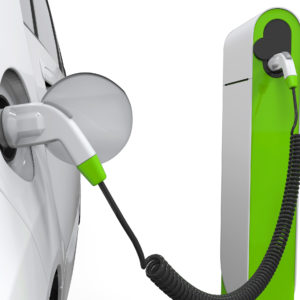California is not exactly known for being a cheap place to live. Residents of the Golden State are subject to an array of taxes and regulations. They pay one of the ten highest tax burdens in the country and the regulatory burden of the state’s environmental policy raises the price of gasoline. And it’s about to get worse for drivers.
Under the terms of a new tax increase signed by Gov. Jerry Brown last week, gas taxes and vehicle registration fees are going up in order to raise an additional $52 billion over ten years to help repair the state’s aging roads. Although the infrastructure work is needed, the terms of the new California gas tax strongly favor electric vehicles, adding to the list of ways in which California subsidizes electric cars at the expense of gasoline ones.
Under the new law, the California gas tax is increasing by 12 cents per gallon, bringing the total tax paid to 30 cents per gallon. Meanwhile, the excise tax on diesel fuel would jump 20 cents per gallon. The law also creates a new vehicle registration fee based on the value of the car. The new fee will range between $25 and $175.
However, under the terms of the law, owners of electric cars will likely pay far less to enjoy California’s newly-repaired roads. In lieu of a gas tax, electric car owners will pay an annual $100 fee in addition to the vehicle registration fee.
According to the Bureau of Transportation Statistics, in 2013, the average California driver drove 8,600 miles over the course of the year. During the same period, the average American light-duty vehicle had a fuel efficiency of 21.6 mpg. This means that over the course of the average year, a driver in California could expect to purchase 400 gallons of gas.
With the new gas tax, this average driver will pay $200 in gas taxes over the course of the year, double the fee that the driver of an electric car will pay to drive on the same roads.
The bulk of the money gathered from both the California gas tax and the increased fees, $34 billion of the first $52 billion raised, will go to repairing roads, bridges, highways, and other necessary infrastructure projects. Under the terms of the deal, the money will be split evenly between state and local projects. Afterwards, another $7 billion is set aside for mass transit projects, including improvements to roads serving the ports of Los Angeles and Long Beach and projects to reduce congestion on popular commuter routes. It also includes $400 million in funding for a commuter rail line between the Bay Area and Central Valley.
Although the money is needed, figuring out how to get it has been a challenge. Legislators in Sacramento had been stalemated over infrastructure spending for two years before the deal was settled and not all of them were happy with the end result. Republican lawmakers jumped to criticize the new bill for raising taxes and for the unnecessary spending it includes.
“Democrats just gave us the largest gas tax increase in state history — a deal so bad they needed $1 billion in pork to buy the votes to pass it,” said Assembly Republican leader Chad Mayes. “California deserves better.”
The California gas tax increase comes on top of an effort in the state that promotes electric vehicles. Earlier this year, the California Public Utilities Commission presented a $1 billion proposal to build and maintain an electric car charging system. The plan was developed after a request by the state Senate last year.
Already, some local observers are pointing out the flaws in the proposal, including that the state and utility companies will be on the hook for updating the charging stations at their end of their lifecycles.
“The key point is that cost recovery would be spread among all utility customers, and not confined to car owners at the charging station,” wrote Dan McSwain in the San Diego Union Tribune.
Nor would this be the first time that the state’s broader population paid for the environmentally friendly regulations that they did not necessarily benefit from. California has some of the highest electric rates in the country, roughly 40 percent higher than the national average. This comes in part because of a 2015 law which requires utilities to purchase 33 percent of their electricity from non-hydroelectric renewable sources by 2020. To help reach these goals, the state has created nearly 200 additional programs aimed at either mandating or subsidizing alternative energy. A variety of state grants exist to support alternative energy production, all paid for from the general state coffers.
However, in the face of this, California continues to promote electric cars as an environmentally friendly option. Sadly, in this case, it is the average drivers who will be picking up the tab for them.

